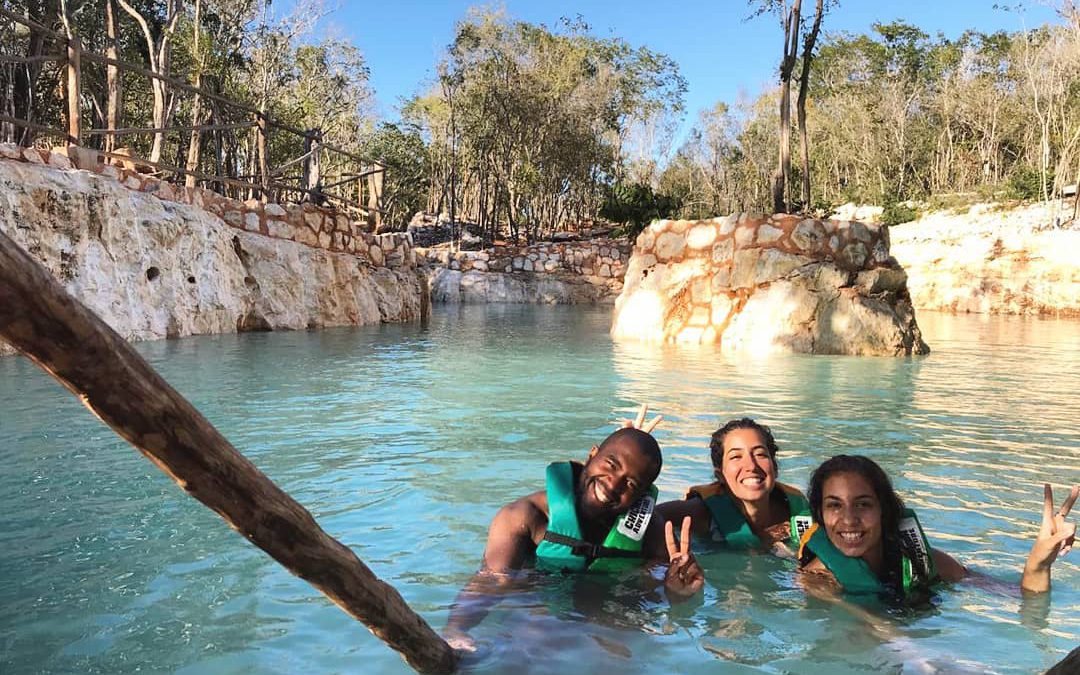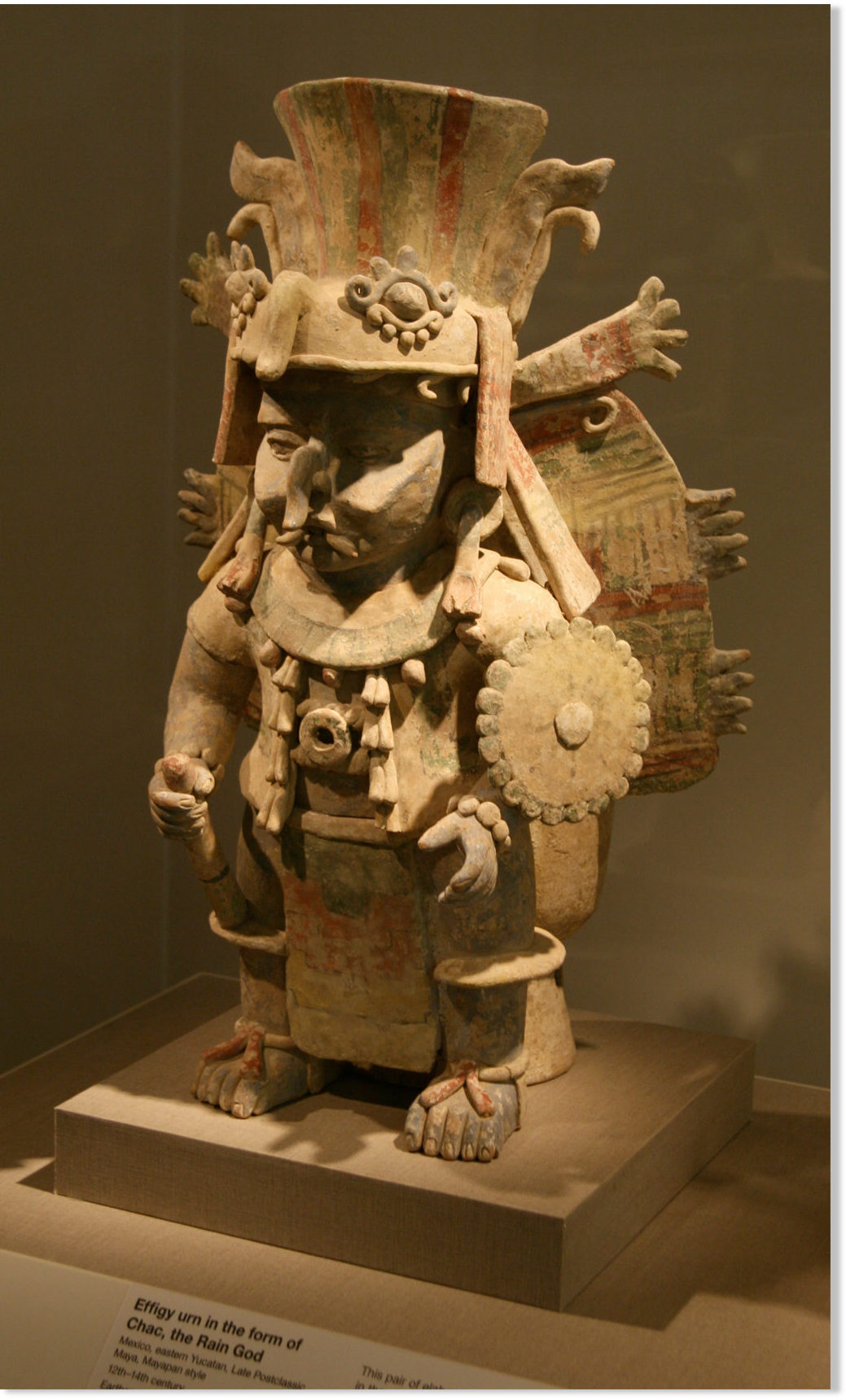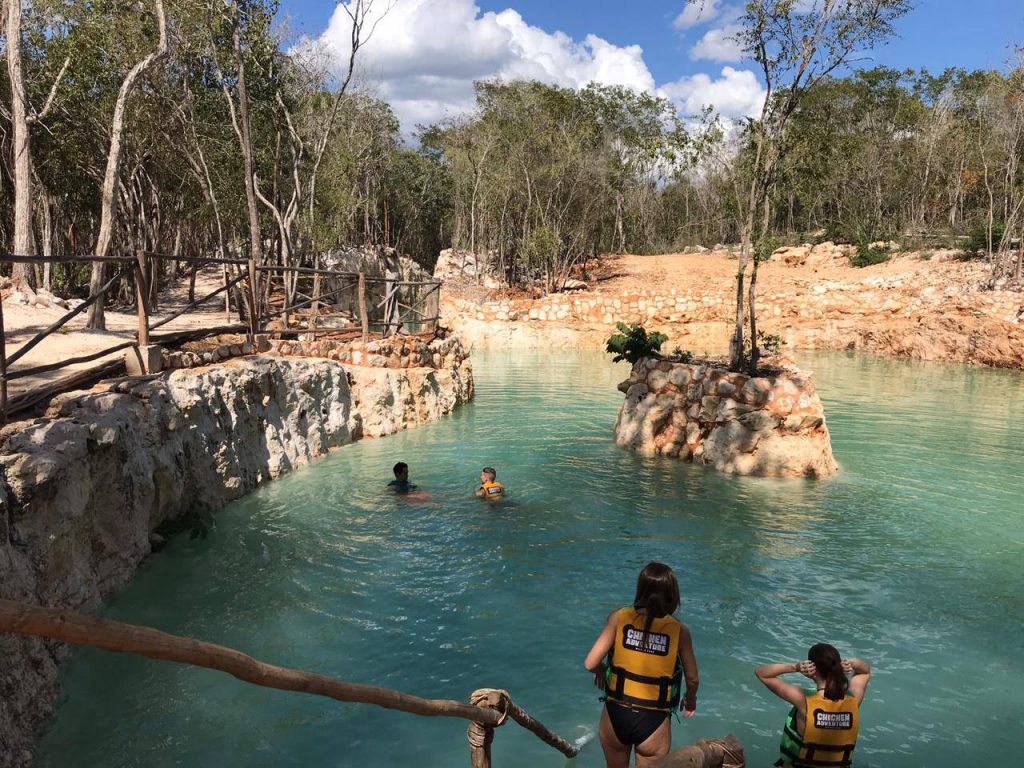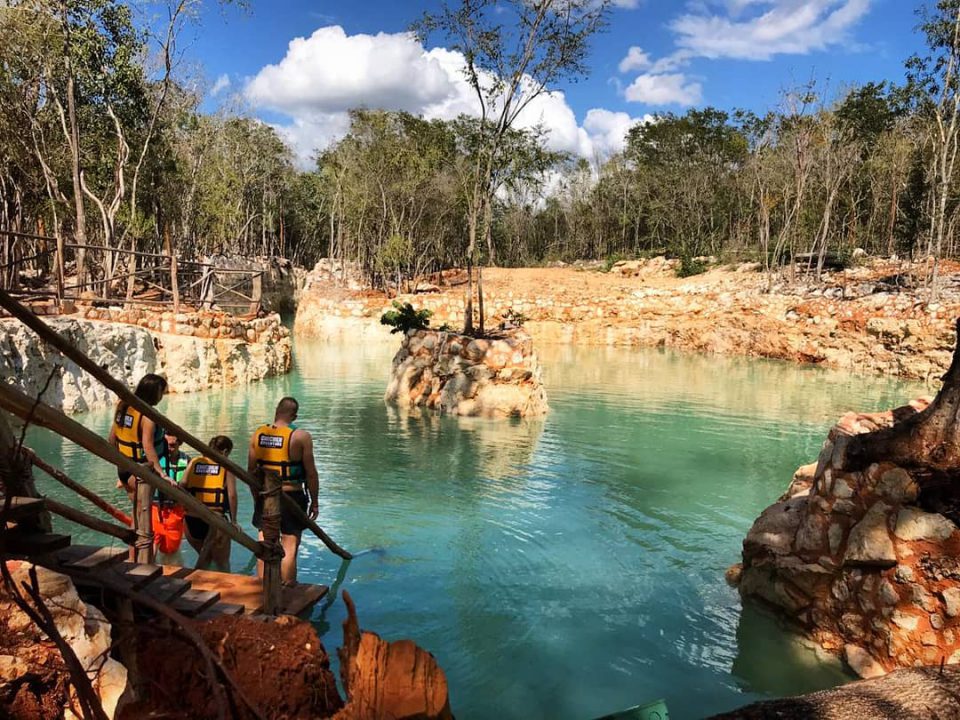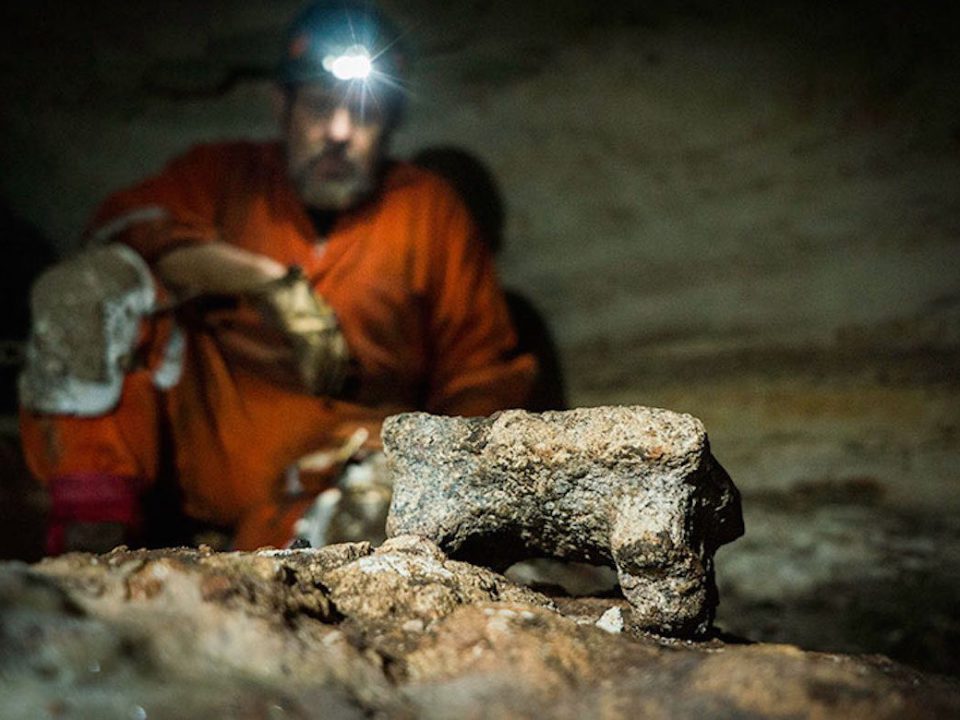On earth there is no heaven, but there are pieces of it. Jules Renard
A vacation is more than just time off work, it’s an opportunity to seek out unique adventures, learn new things and immerse yourself in a whole other world. There is no better place to disconnect from the technological world and reconnect with nature than the Yucatan Peninsula, from the Mesoamerican Reef and the beaches to the spectacular cenotes hidden under the vast jungles and the world’s longest underground river. The cenotes of Yucatan are a true marvel of nature and history and are a must-do when visiting Cancun or Merida! We can’t wait for you to learn more and join us in the Cenote Rio Maya at Chichen Adventure!
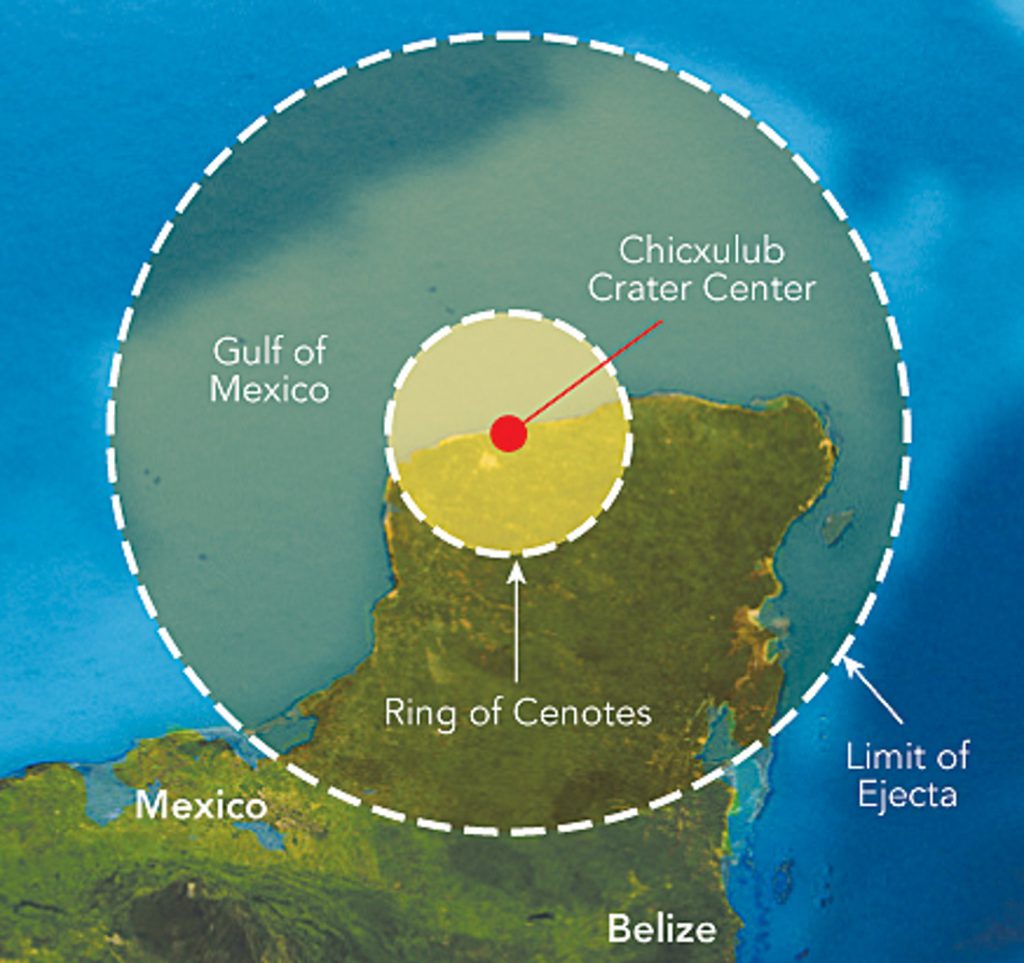
photo courtesy http://pcty.com.mx/museo-de-ciencias/
What is a cenote?
A long time ago in a galaxy far, far away, an asteroid flew through space on a collision course for earth. 66 millions years ago this asteroid crashed down causing the extinction of the dinosaurs and creating the enormous Chicxulub crater in what is now the state of Yucatan, Mexico. The impact created change around the world and also set in motion the development of the “cenotes” of the region. The rim of the crater is full of “sinkholes” that were filled in by groundwater and seawater, the levels rising and falling over the next few million years. These sinkholes are what we know today as “cenotes”, from the Maya word “ts-onot”.
Cenotes of the Yucatan: Sacred Ground
Let’s jump ahead a few million years to the times of the ancient Maya (beginning in the pre-classic era around 2000 BC and ending in the post-classic around 1500 AD). With no surface rivers or lakes, the only freshwater to be found in the Yucatan was underground, hidden in the cenotes and underground rivers. For the ancient Maya, the search for water was an essential part of their daily life and they turned to the rain god Chaac for assistance.
It was believed that the god Chaac lived in the cenotes that acted as portals to the underworld, providing the sweet fresh water that sustained the civilization. The ancient Maya developed rituals and offerings to please Chaac and to bring the rains to fill the cenotes and bless their crops. Modern-day archaeologists have explored the cenotes and underground rivers and have found evidence of offerings to Chaac, including ceramics, jade, cacao and even human sacrifices. The Sacred Cenote of Chichen Itza is perhaps the most famous of all for the discoveries made by Edward Thompson as he dredged and dove the cenote between 1904 and 1910.
Modern Day Cenotes in Yucatan
Yucatan cenotes have a fascinating history, but why visit a cenote today? Simple answer, cenotes are beautiful! Carved into ancient limestone, cenotes come in many forms, from the oldest “open cenotes” to the “younger” cenotes found hidden deep in caves. Many of the cenotes in Yucatan are of the “cylinder” variety, set deep in the earth with tall vertical walls, like the famous Cenote Ik Kil close to Chichen Itza. Visitors to the Yucatan will love being immersed in this natural history, swimming and refreshing in the ancient sacred waters and being amazed by the stalactite and stalagmite formations of the younger cenotes (“young” is relative of course, they are still millions of years old!). The mineral-rich waters will purify mind, body and soul.
Cenote Rio Maya at Chichen Adventure
Visitors to Chichen Adventure have the unique opportunity to swim and refresh in our own Cenote Rio Maya! Dive in, splash and float and enjoy the clear waters of our cenote-fed river. Surrounded only by the sounds of the jungle, Chichen Adventure guests will immerse themselves in these magical waters and enjoy a peaceful time surrounded by nature. This is the ideal way to refresh after exploring nearby Chichen Itza! Book your Chichen Adventure today to get you one step closer to the marvels of the cenotes of Yucatan!
We need the tonic of wildness…At the same time that we are earnest to explore and learn all things, we require that all things be mysterious and unexplorable, that land and sea be indefinitely wild, unsurveyed and unfathomed by us because unfathomable. We can never have enough of nature. Henry David Thoreau

